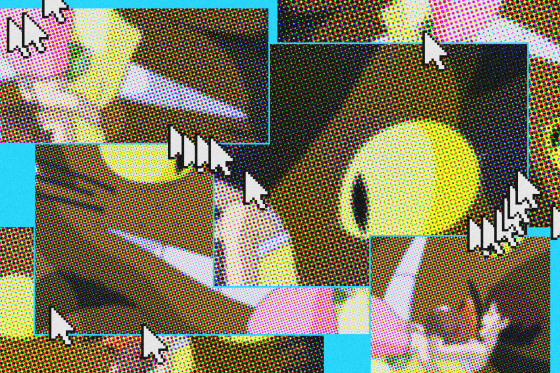Joy Cardaño said she used to get commissioned almost every week to create anime-inspired art. Now, she said, that work has nearly come to a halt, with many online users seeming to gravitate toward artificial intelligence-made art, instead.
From Studio Ghibli-inspired illustrations to doll and action figure “starter packs,” an explosion of AI-generated images in recent weeks has sparked a fresh wave of concern among artists like Cardaño, who argue that using AI undermines the importance of trained artists and takes away their commission opportunities.
“People who use it [AI generators] should be respectful of artists,” Cardaño, who goes by Joyblivion on Instagram, said in an email, calling the trend “so unethical.” “Even if the artists are vocal about how they don’t want their art to be used, they refuse to listen. I think whoever uses it or is thinking of using it should research how it impacts the art community.”
Many in the art community echo the sentiment as they continue to monitor the latest advancements in AI, including the recent rollout of OpenAI’s GPT- 4o, which can generate text, images and audio. ChatGPT users are able to generate images using the model for free. The rest of its capabilities are for paid users only, with membership prices starting at $20 a month.
Cardaño, 30, who is based in the Philippines, said she has been a full-time artist since she graduated from college. She primarily sells her work on INPRNT, an online shop. Her commissioned pieces usually start at $100.
After having seen the virality of the Ghibli trend, she took to Instagram to highlight her past work in hope of swaying people to pay for art, instead.
“Studio Ghibli fan art that I drew with my own hands without needing AI,” she wrote in an April 1 post, accompanied by a sample of her work.
Several other artists took the same approach, posting their own images while condemning the use of AI and circulating a video of Studio Ghibli co-founder Hayao Miyazaki calling AI-generated art “an insult to life itself.” Artists have kept up the same momentum with the action figure starter pack trend, by similarly posting their own human-made version takes on the trend.
Many artists say they are particularly concerned about AI’s ability to mimic certain styles, which artists have honed for years.
Hollie Mengert, 37, a Los Angeles-based illustrator, said she came across an AI model that was trying to replicate her art style back in 2022 — the year ChatGPT was released.
After she received messages notifying her that someone had made a model based on her art style, she decided to take a look for herself. She wasn’t impressed with what she saw. She said the images that the model produced were similar to hers but that they lacked emotion and weren’t something she “would actually draw.”
“What would you do if you took the time that you’re typing prompts into AI and just try sketching something for yourself?” Mengert said. “I know that doesn’t always appeal to everybody, but I’m just so much more interested to see what people come up with for themselves, because it’s always more personal.”
Some artists, like illustrator and cartoonist Sarah Andersen, are taking legal action.
A few years ago, Andersen, 32, found herself in a position similar to Studio Ghibli’s after she saw people online were creating false versions of her comics using AI technology. That led her and two other artists to sue three AI companies in January 2023 alleging copyright infringement, claiming the companies were using her work to train the models. The lawsuit is still active.
“Credit, consent and compensation, that’s what we would like from those models,” Andersen said. “That’s what we’re trying to achieve with the lawsuits.”
The proliferation of AI-made art does ultimately take a toll on many artists.
“If you’re an artist that works mainly off of commissions, you’re probably losing a lot of income because it is cheaper, easier and faster to use a model to create an image than it is to pay an artist,” she said. “And of course, that’s a financial issue, because if you want to use that particular artist’s style, you can do that, too, and you can do that without their consent, so it becomes a big financial issue.”
OpenAI and other tech companies have taken some steps to try to prevent their AI models from directly copying particular artists.
OpenAI has said it is choosing to take a “conservative approach” with this version of AI image generation. With GPT-4o, the model can generate images that resemble the aesthetics of certain artists when the artists’ names are included in the prompt, but the company has added “a refusal which triggers when a user attempts to generate an image in the style of a living artist.”
“Our image generation tools are designed to support human creativity, not replace it, helping anyone explore ideas and express themselves in new ways,” an OpenAI spokesperson said in a statement.
NBC News tested the model and found that it would refuse to create images that replicated Mengert’s and Andersen’s styles. It did still create images in the style of Studio Ghibli, but not when it was asked to create an image in the style of Miyazaki.
OpenAI CEO Sam Altman defended the AI art trends in an interview with content creator Varun Mayya posted to YouTube this month.
“I think the democratization of creating content has been a big net win for society,” he said when he was asked about his thoughts about the backlash from artists. “It has not a complete win; there are negative things about it for sure, and certainly it did something about the art form. But I think on the whole it’s been a win.”
